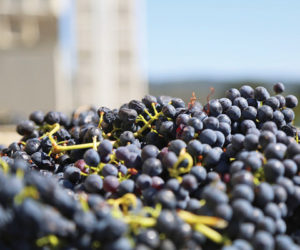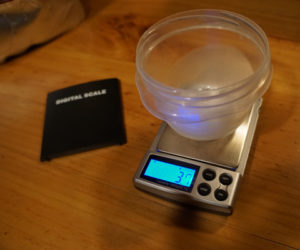They say winemaking is part science, part art. That expression may ring most true when it comes to fermenting red wines. While there have been numerous studies and much research regarding the benefits of various techniques used during fermentation, winemakers still often go with their gut, rely on their own experiences, and preferences. And the fact is, great wine can be made no matter which decision you make to any of the following questions. But still, it can never hurt to get some additional opinions (beyond the two winemakers’ outlined in the story on page 38 of this issue). So, we rounded up two more winemakers to share their beliefs regarding some of the most intriguing red fermentation decisions, just in time for this year’s vintage at your own winery.
Tom Rodrigues, Owner & Winemaker of Maple Creek Winery in the Yorkville Highlands of Anderson Valley, California.

Do you do any whole cluster fermentations?
Yes, I use about 75% whole cluster in most if not all of my reds. I do this because I am a fruit-forward winemaker and I enjoy the deep, rich fruit flavors that whole cluster fermentation brings to the wine.
Do you believe cold soaking benefits red wines?
Yes, Pinot Noir, the “princess of grapes,” really benefits in cold soaking and I do it with Merlot and Cabernet as well. Cold soaking can extract color and flavor without extracting tannins. That’s why I do it.
Do you prefer commercial yeast or native?
I prefer native yeasts. It brings the vineyard to the bottle, in my opinion. With Pinot Noir, for sure. I so use Lalvin Rhône 2226 for my Zinfandel, Merlot, and Cabernet Sauvignon.
Do you employ an extended maceration with your reds? For how long?
Yes, depending on harvest and crush. 2018 and 2019, for example, were back-to-back light years for color, so a few days of extra maceration helped extract some additional color from the grapes.
At what point do you press your reds (totally dry, or with some sugar remaining)?
I press at dryness, mostly. We have colder years in October here in Mendocino County and a few times I have had to press with a little residual left in the wine. I barreled them down and waited for spring to warm up, then fermentation can be completed. A little luck is needed here!
How long do you keep your wines in barrels?
I keep my Pinots and Zinfandels in barrel from 10 to 24 months. Cabernet Sauvignon and Merlot, on the other hand, I will age in barrel anywhere from 18 to 60 months. Extending aging in barrel is a personal choice. You must keep the barrels healthy by topping regularly and checking SO2, otherwise you can develop volatile acidity in time. We grow a cool-climate Merlot, for example, which has high tannins at harvest. So this wine needs a longer time to soften the tannins. Plus, I make late harvest wines that I leave for years to develop the depth on the palate.
Are there any other decisions that you believe you go “against the grain” for red wines?
Yes, the amount of barrel aging. I collected French wine for 35 years before I became a winemaker, and I love the older varietals’ development.
Chik Brenneman, Winemaker for Baker Family Wines in West Sacramento, California

Do you whole cluster ferment?
I have not been a fan of whole cluster fermentations. I do not like the vegetal flavors that the stems impart. I prefer to de-stem the clusters, set the rollers a little wide and let about 50% of the berries pass through intact. The resulting fermentation adds an enhanced fruitiness.
Do you believe cold soaking benefits red wines?
Not really. I have been involved in a lot of research on this topic. Making a long story short, most color development occurs in the first 7–10 days
of maceration.
Do you prefer commercial yeast or native?
Bulletproof commercial yeast is my choice. Lalvin EC-1118 for reds, Lalvin QA23 for whites. I know what I am getting with these yeasts.
Do you employ an extended maceration with your reds? For how long?
The only varieties I would extend the maceration would be lightly pigmented varieties like Sangiovese and Pinot Noir. Extended maceration will lead to extraction of catechin and epicatechin, which can aid in color stabilization, but also can lead to excessive bitterness and astringency. So 14 days maceration is generally my max.
When do you press your reds?
In a healthy fermentation the wine should have no trouble getting down to 0 °Brix in 6–10 days. However, if the fermentation becomes sluggish or stuck, then I will press at whatever the Brix is. In many cases, the infusion of oxygen will give the yeast new life and the wine will finish. Otherwise the wine is ready for a restart protocol.
How long do you barrel age?
There is no set rule on how long the wine is in the barrel in my winery. There are many factors that impact this. I taste the wine throughout aging and it tells me when it is ready.






